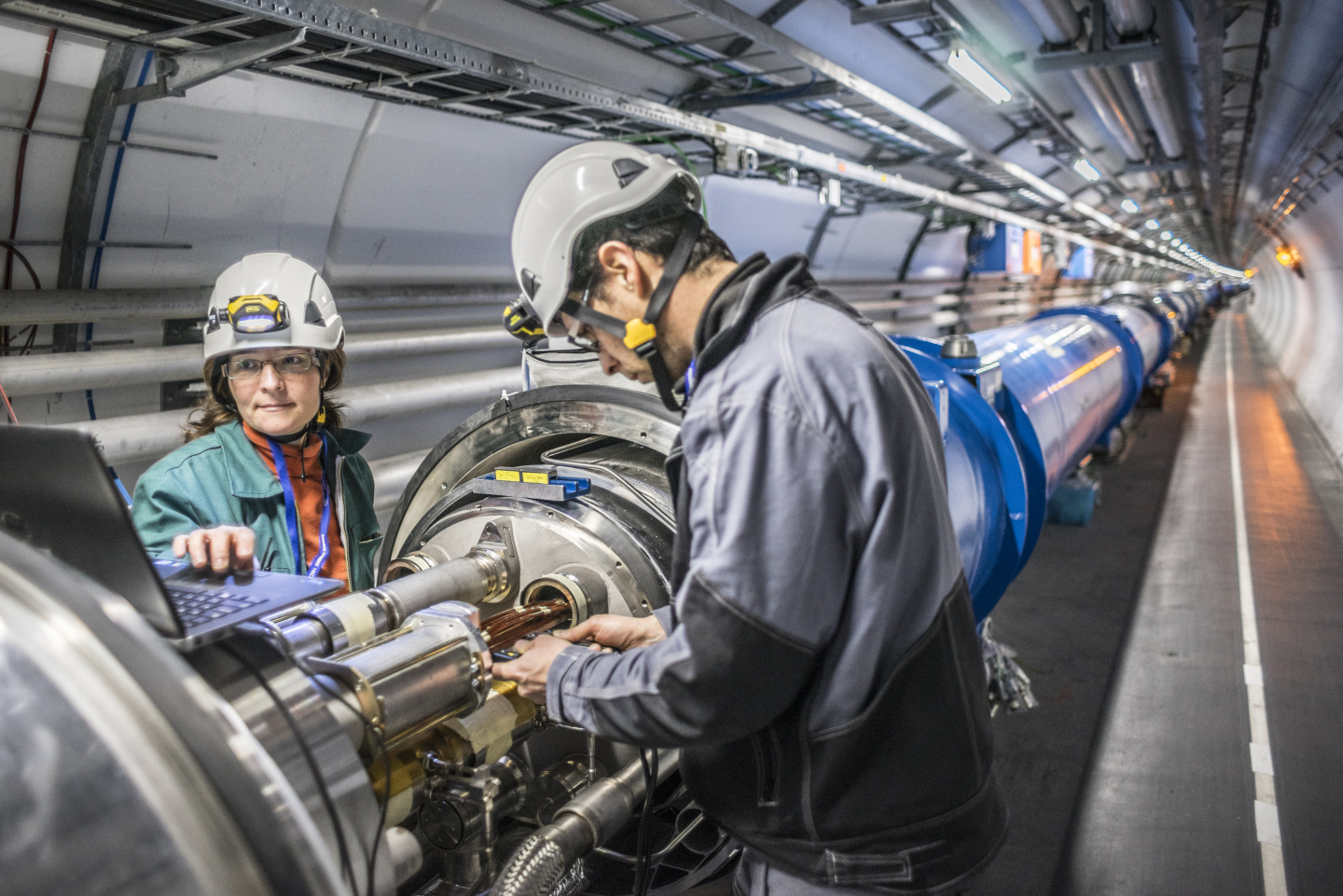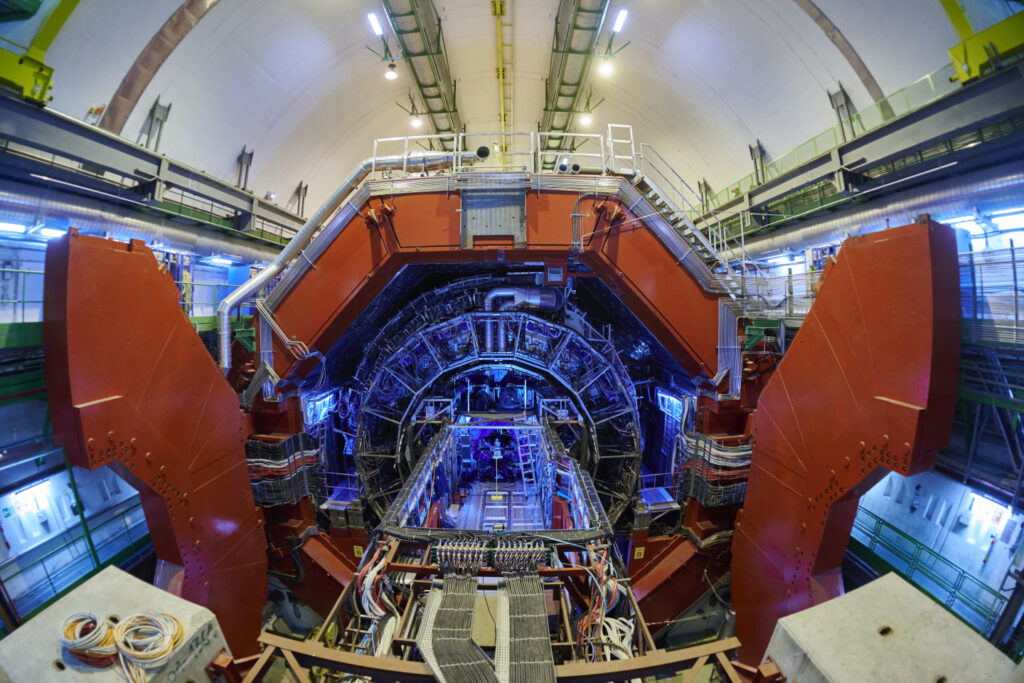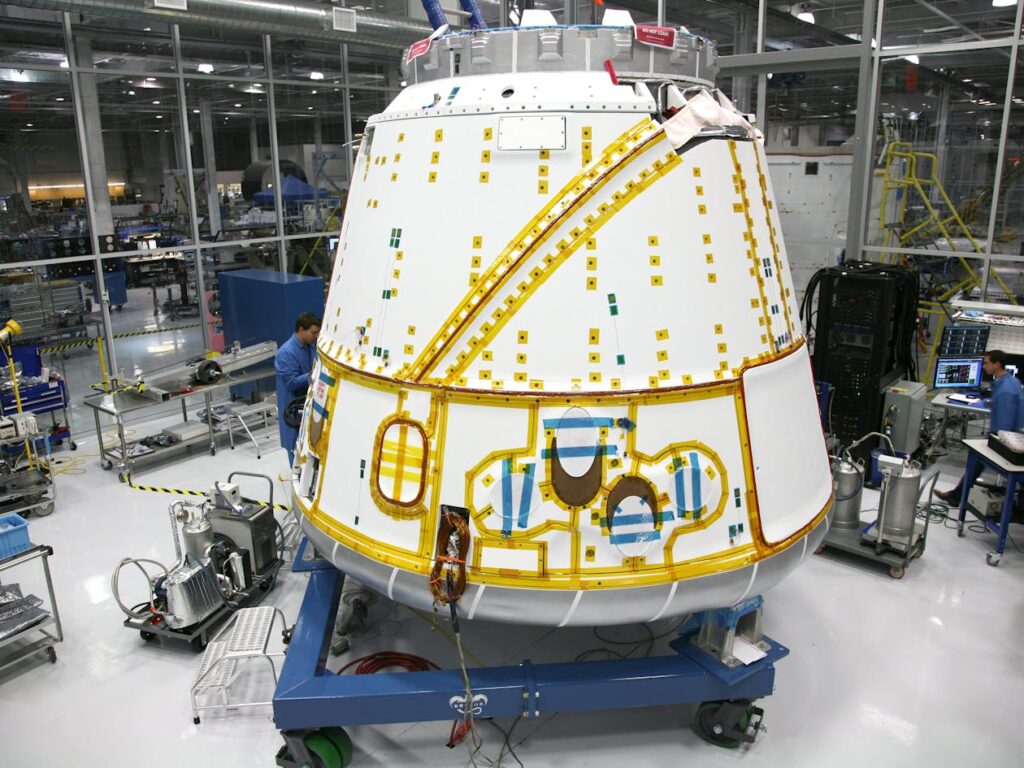Physicists Just Transformed Lead Into Gold for the First Time Ever!

Imagine walking into a laboratory and witnessing something that medieval alchemists spent lifetimes trying to achieve. For centuries, brilliant minds mixed chemicals, heated metals, and performed countless experiments in dusty workshops, all chasing the same impossible dream. They believed that with the right combination of knowledge and luck, they could transform ordinary lead into precious gold.
Scientists at CERN have done exactly that—but not in ways those ancient dreamers ever imagined. Using the world’s most powerful particle accelerator, researchers have successfully converted lead into gold, fulfilling one of humanity’s oldest scientific quests. But before you start planning your retirement, there’s a twist to this modern alchemy story that would make those medieval experimenters both amazed and deeply disappointed.
When Medieval Dreams Meet Modern Science
Medieval alchemists weren’t entirely wrong in their observations. Lead and gold share similar densities, making them feel surprisingly alike when held. Both metals possess that satisfying weight that suggests value and permanence. Ancient scientists logically assumed that if two materials felt so similar, perhaps one could transform into the other through the right process.
What they couldn’t know was that lead and gold represent completely different chemical elements. Lead contains 82 protons in its nucleus, while gold contains exactly 79. Chemical reactions—no matter how clever or elaborate—can never change the number of protons in an atom’s core.
Only nuclear physics, developed centuries later, revealed how elements could actually transform. Radioactive decay naturally converts some elements into others over time. Scientists learned to trigger these transformations artificially using neutron bombardment or particle collisions. Previous experiments had created tiny amounts of gold, but never through the remarkable mechanism discovered at CERN.
Near-Miss Collisions That Create Precious Metal

CERN’s Large Hadron Collider accelerates lead nuclei to incredible speeds—99.999993% the speed of light. At these velocities, something extraordinary happens to the electromagnetic fields surrounding each nucleus. Einstein’s theory of relativity predicts that these fields compress into thin, pancake-like shapes perpendicular to the direction of motion.
When two lead nuclei hurtle toward each other and narrowly miss colliding, their compressed electromagnetic fields create intense pulses of energy. Each lead nucleus carries 82 protons, generating tremendously powerful electromagnetic forces during these near-miss encounters.
During these brief moments, the electromagnetic fields become strong enough to knock protons right out of the lead nuclei. Scientists call this process electromagnetic dissociation—a fancy term for using electromagnetic forces to break apart atomic nuclei. To create gold from lead, exactly three protons must be removed, transforming element 82 into element 79.
“It is impressive to see that our detectors can handle head-on collisions producing thousands of particles, while also being sensitive to collisions where only a few particles are produced at a time, enabling the study of electromagnetic ‘nuclear transmutation’ processes,” explains Marco Van Leeuwen, ALICE spokesperson.
ALICE Detector Catches Fleeting Golden Moments

ALICE (A Large Ion Collider Experiment) represents one of four major experiments at the Large Hadron Collider. While primarily designed to study quark-gluon plasma—the exotic matter that filled the universe microseconds after the Big Bang—ALICE possesses remarkable sensitivity for detecting subtle nuclear processes.
Scientists used specialized equipment called zero degree calorimeters (ZDCs) to monitor these electromagnetic interactions. Zero degree calorimeters sit precisely along the beam direction, 112.5 meters away from where particles collide. When protons or neutrons fly forward from electromagnetic dissociation events, these detectors count them with extraordinary precision.
Researchers tracked the emission of zero, one, two, and three protons, each pattern associated with producing different elements. Zero protons removed creates various lead isotopes. One proton removal produces thallium. Two protons create mercury. Three protons—the magic number—generates gold.
ALICE’s sophisticated detection systems can simultaneously handle massive collisions creating thousands of particles while remaining sensitive enough to detect events producing just a few particles. Engineering this level of versatility requires decades of technological development and represents a triumph of modern experimental physics.
Numbers That Boggle the Mind
ALICE currently produces gold at a maximum rate of approximately 89,000 nuclei per second during lead-lead collisions. While this might sound impressive, the actual quantity remains mind-bogglingly small. During Run 2 of the LHC (2015-2018), scientists estimate that approximately 86 billion gold nuclei were created across all four major experiments.
Converting these numbers into mass reveals the true scale: 86 billion gold nuclei equals exactly 29 picograms of actual gold. A picogram represents one trillionth of a gram. To put this in perspective, a single grain of salt weighs about 58 million picograms. ALICE’s entire four-year gold production wouldn’t be visible under the most powerful microscopes.
Run 3 has already produced nearly double the amount of gold compared to Run 2, thanks to improved luminosity and upgraded equipment. Even with these enhancements, the total remains trillions of times smaller than the amount needed to make the tiniest piece of jewelry.
“Thanks to the unique capabilities of the ALICE ZDCs, the present analysis is the first to systematically detect and analyse the signature of gold production at the LHC experimentally,” notes Uliana Dmitrieva of the ALICE collaboration.
Electromagnetic Dissociation: Nature’s Particle Accelerator

Electromagnetic dissociation sounds complex, but the underlying process follows straightforward physics principles. High-energy photons—particles of light—interact with atomic nuclei and excite their internal structures. Like shaking a bowl of marbles, this excitation causes some protons and neutrons to break free from the nuclear binding forces.
Lead nuclei traveling at near-light speeds generate intense bursts of photons when their electromagnetic fields compress and interact. During near-miss encounters, these photon bursts carry enough energy to overcome the strong nuclear force holding protons inside lead nuclei.
Removing exactly three protons requires precise energy conditions. Too little energy and insufficient protons escape. Too much energy and the nucleus fragments completely, creating multiple different elements simultaneously. ALICE scientists measured these precise conditions and confirmed that gold production occurs regularly during high-energy lead collisions.
Each gold nucleus exists for only a tiny fraction of a second. At such high energies, these newly created gold atoms immediately travel forward and strike various components of the LHC infrastructure, where they fragment into individual protons, neutrons, and other particles.
Why Gold Vanishes Before Anyone Can Touch It

Dreams of collecting LHC-produced gold face immediate reality checks. High-energy gold nuclei emerge from electromagnetic dissociation events traveling at tremendous speeds. Within microseconds, they collide with beam pipes, collimators, or other accelerator components positioned throughout the 27-kilometer LHC ring.
Upon impact, gold nuclei fragment instantly into their constituent particles. No solid gold metal ever forms. No golden nuggets accumulate anywhere in the LHC tunnel. Each precious nucleus exists briefly as a high-energy particle before disintegrating completely.
Collimators—devices designed to absorb stray particles and protect sensitive equipment—intercept most of these gold nuclei at various points downstream from the collision regions. Engineers specifically design these systems to handle such particle losses, though they never anticipated intercepting artificially created gold.
Some gold nuclei travel further before hitting the beam vacuum chamber at locations where particle beams separate horizontally or enter regular collider sections. Others contribute to particle showers when they strike collimator materials, creating cascades of secondary particles that detectors can measure.
Scientific Breakthrough Beyond Alchemy
Creating gold represents just one aspect of ALICE’s groundbreaking research. Scientists primarily value these measurements for testing theoretical models of electromagnetic dissociation and improving understanding of particle accelerator performance.
“The results also test and improve theoretical models of electromagnetic dissociation which, beyond their intrinsic physics interest, are used to understand and predict beam losses that are a major limit on the performance of the LHC and future colliders,” adds John Jowett, also of the ALICE collaboration.
Beam losses significantly limit accelerator performance by reducing particle intensity and potentially damaging sensitive equipment. Understanding exactly how electromagnetic processes create secondary particles helps engineers design better colliders and predict operational challenges.
These measurements also advance fundamental nuclear physics by providing new data about photon-nucleus interactions at unprecedented energies. Previous experiments studied similar processes at much lower energies, but LHC conditions create unique opportunities to test theoretical predictions under extreme conditions.
From Quark-Gluon Plasma to Nuclear Transmutation
ALICE’s primary mission involves studying quark-gluon plasma, an exotic state of matter that existed microseconds after the Big Bang. When lead nuclei collide head-on at LHC energies, they create temperatures exceeding 100,000 times hotter than the Sun’s center. Under these extreme conditions, protons and neutrons melt, freeing quarks and gluons from their normal confinement.
Gold production represents a fascinating side discovery from equipment designed for completely different research. ALICE’s zero degree calorimeters, originally built to study spectator nucleons in heavy-ion collisions, proved perfectly suited for detecting electromagnetic dissociation events.
Scientists often make unexpected discoveries while pursuing other research goals. Electromagnetic dissociation measurements emerged from systematic studies of all possible particle interactions during lead-lead collisions. Only after careful analysis did researchers realize they had documented the first systematic detection of gold production at a particle accelerator.
What 27 Kilometers of Superconducting Magnets Achieve

Building the Large Hadron Collider required extraordinary engineering achievements. A 27-kilometer ring of superconducting magnets guides particle beams around the underground tunnel. Maintaining superconductivity demands cooling these magnets to -271.3°C—colder than outer space.
1,232 dipole magnets, each 15 meters long, bend particle beams around the circular path. 392 quadrupole magnets focus beams to incredibly small diameters. Just before collisions, additional magnets squeeze particles closer together, increasing collision probability. Making particles collide resembles firing two needles from 10 kilometers apart with such precision they meet exactly halfway.
Four experimental areas around the ring host different research projects: ATLAS and CMS study fundamental particles and forces, LHCb investigates matter-antimatter differences, and ALICE studies heavy-ion physics. Each experiment requires specialized detectors optimized for specific research goals.
ALICE’s unique capabilities for studying both high-multiplicity collisions and rare electromagnetic processes made gold detection possible. Other LHC experiments lack the specialized forward detectors needed to identify electromagnetic dissociation events systematically.
Medieval Alchemists Were Almost Right
Ancient alchemists possessed remarkable intuition about element transformation, even without understanding nuclear physics. They correctly recognized that different metals might convert into each other under proper conditions. Their laboratory techniques simply operated at the wrong energy scale.
Chemical reactions involve electrons orbiting atomic nuclei but never affect nuclear composition directly. Nuclear transformations require energies millions of times larger than chemical reactions can provide. Medieval equipment couldn’t generate such extreme conditions, making their quest impossible with available technology.
Modern nuclear physics proved alchemists’ basic premise correct while revealing why their methods failed. Particle accelerators provide the extreme energies needed for nuclear transmutation, achieving transformation goals that chemical processes cannot accomplish.
CERN’s achievement represents both vindication and irony for medieval dreamers. Their fundamental vision proved correct, but the practical reality offers no pathway to wealth or easy gold production.
When Physics Moves Faster Than Dreams
Medieval alchemists dreamed of transforming lead into gold to achieve wealth and unlock nature’s secrets. CERN scientists accomplished their transmutation goal but discovered that physics operates on scales completely divorced from human economic concerns.
Creating 29 picograms of gold costs far more than purchasing equivalent quantities of natural gold. Operating the LHC requires enormous electricity consumption, sophisticated infrastructure, and hundreds of highly trained personnel. No economic model supports gold production through particle acceleration.
Standing in ALICE’s underground cavern, surrounded by 10,000 tonnes of detection equipment, you witness something medieval alchemists could never have envisioned. Their dream of transforming lead into gold has finally come true, but through mechanisms requiring the most sophisticated technology humanity has ever built.
Each golden nucleus created at CERN represents triumph over impossible odds—proof that human curiosity and determination can accomplish anything, even dreams that seem utterly unrealistic. While medieval alchemists won’t achieve riches through nuclear transmutation, their spirit of inquiry lives on in every particle collision, every measurement, every moment when ordinary matter reveals extraordinary secrets about our universe.
Loading...

